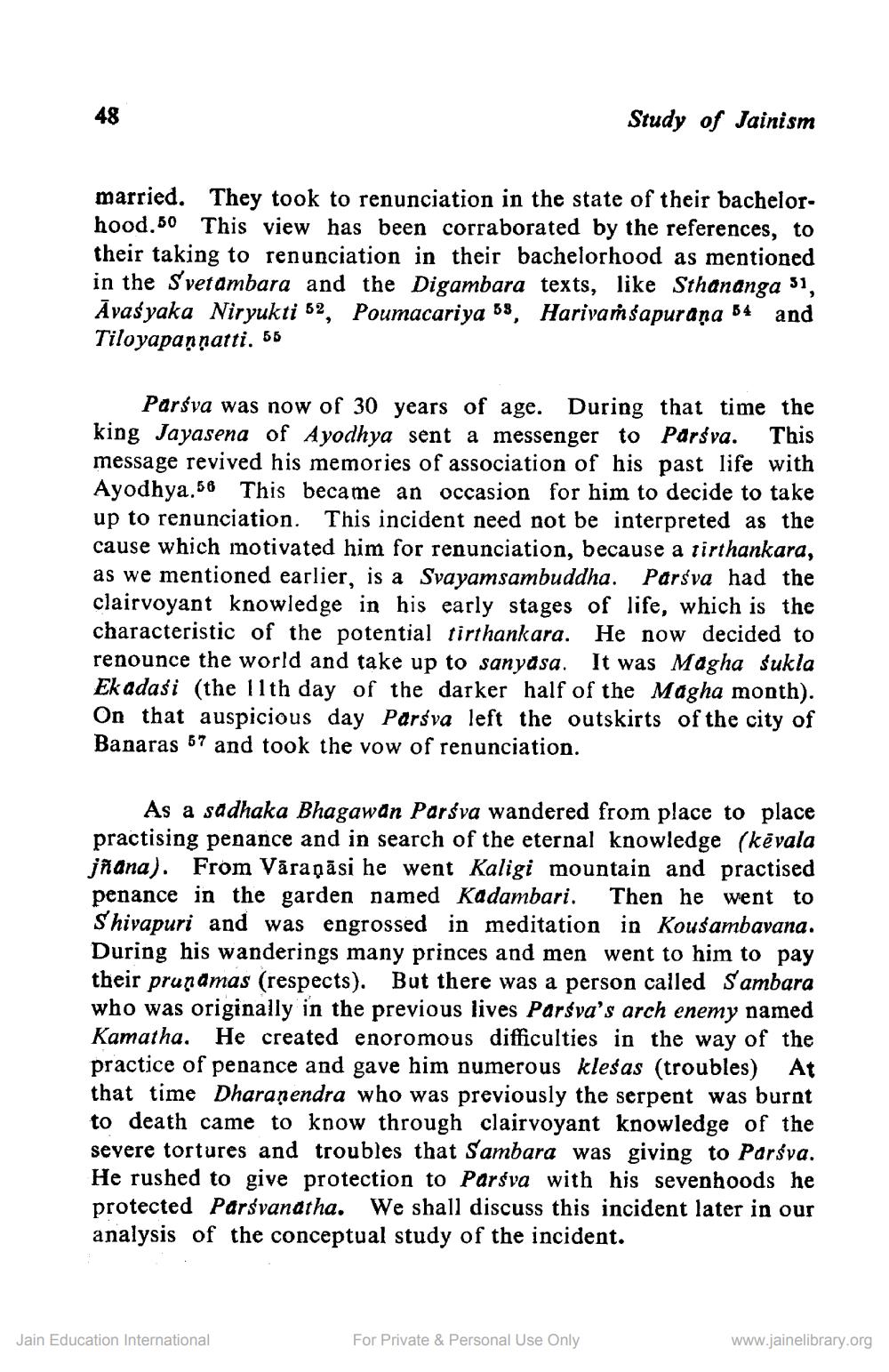________________
Study of Jainism
married. They took to renunciation in the state of their bachelorhood.50 This view has been corraborated by the references, to their taking to renunciation in their bachelorhood as mentioned in the Svetambara and the Digambara texts, like Sthananga si, Āvas yaka Niryukti 62, Poumacariya 68, Harivaṁsapurana 34 and Tiloyapannatti. 55
Parsva was now of 30 years of age. During that time the king Jayasena of Ayodhya sent a messenger to Parsva. This message revived his memories of association of his past life with Ayodhya.58 This became an occasion for him to decide to take up to renunciation. This incident need not be interpreted as the cause which motivated him for renunciation, because a tirthankara, as we mentioned earlier, is a Svayamsambuddha. Parsva had the clairvoyant knowledge in his early stages of life, which is the characteristic of the potential tirthankara. He now decided to renounce the world and take up to sanyasa. It was Magha sukla Ek adasi (the 11th day of the darker half of the Magha month). On that auspicious day Parsva left the outskirts of the city of Banaras 57 and took the vow of renunciation.
As a sadhaka Bhagawan Parsva wandered from place to place practising penance and in search of the eternal knowledge (kēvala jñana). From Vāraṇāsi he went Kaligi mountain and practised penance in the garden named Kadambari. Then he went to Shivapuri and was engrossed in meditation in Kousambavana. During his wanderings many princes and men went to him to pay their prundmas (respects). But there was a person called Sambara who was originally in the previous lives Parsva's arch enemy named Kamatha. He created enoromous difficulties in the way of the practice of penance and gave him numerous klesas (troubles) At that time Dharanendra who was previously the serpent was burnt to death came to know through clairvoyant knowledge of the severe tortures and troubles that Sambara was giving to Parsva. He rushed to give protection to Parsva with his sevenhoods he protected Parsvanatha. We shall discuss this incident later in our analysis of the conceptual study of the incident.
Jain Education International
For Private & Personal Use Only
www.jainelibrary.org




